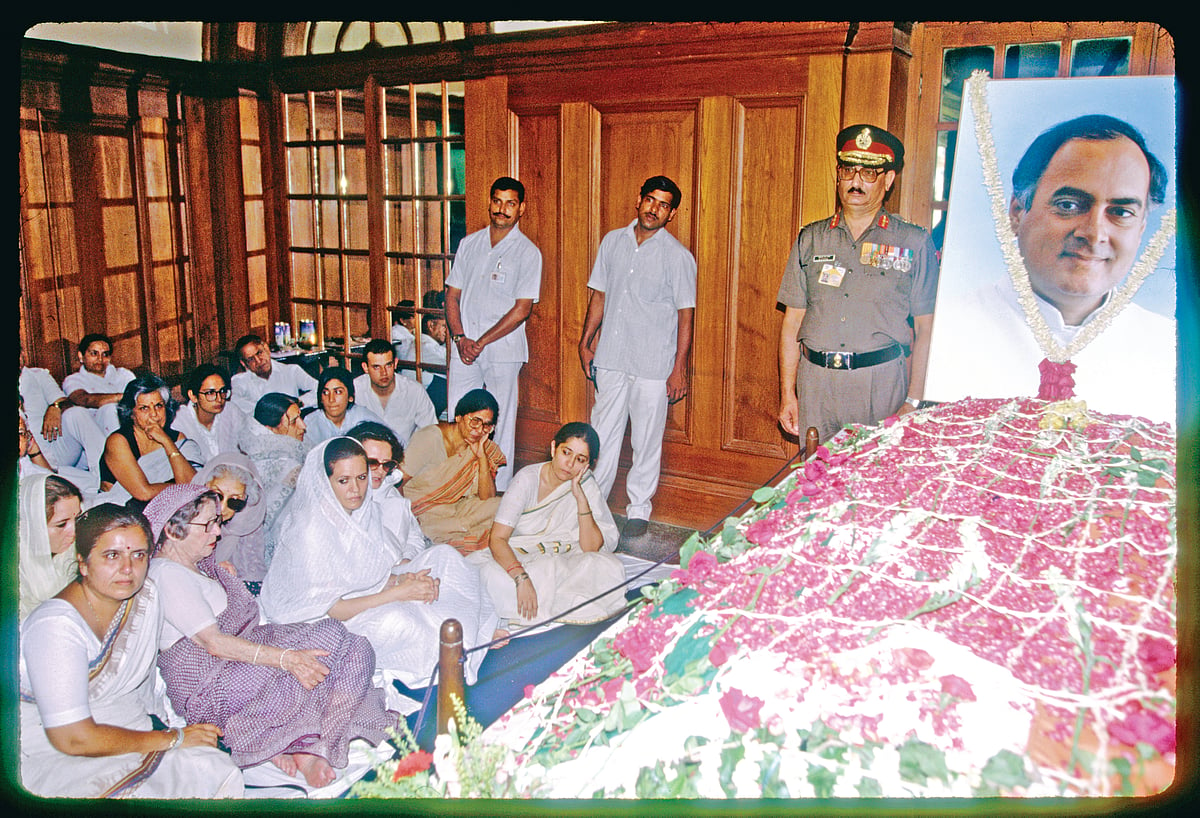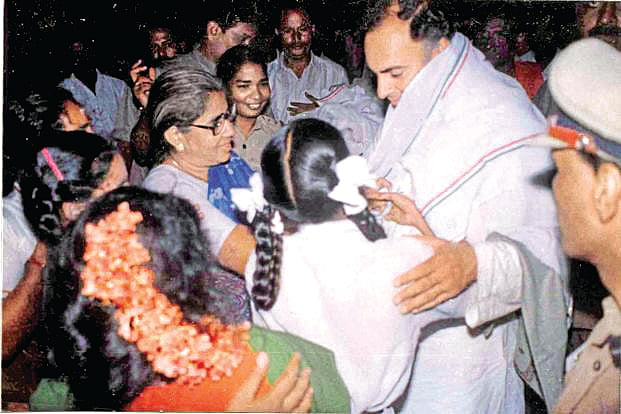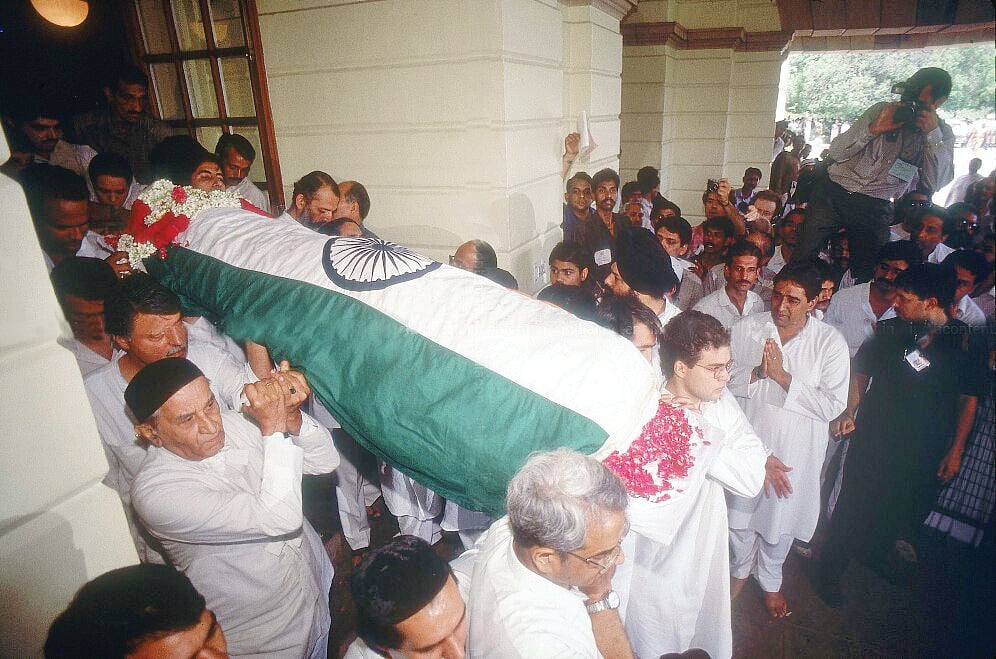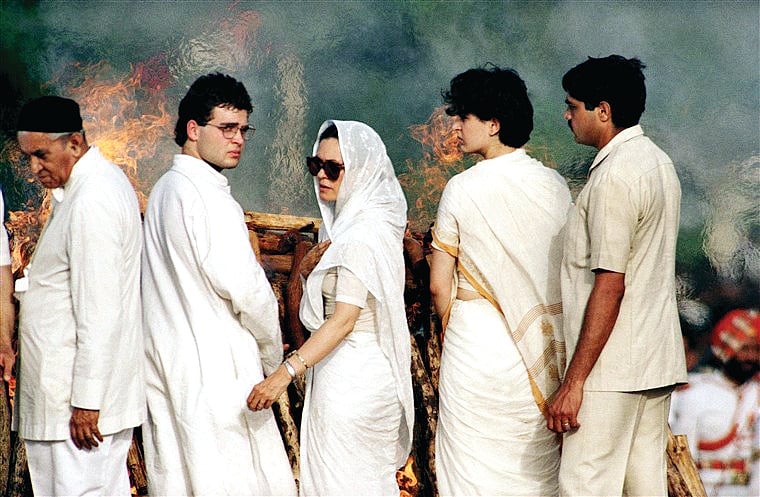In remembrance of Rajiv Gandhi, who was killed on this day 28 years ago
Former Chief Information Commissioner and a close associate of Rajiv Gandhi Wajahat Habibullah laments how poorly Rajiv Gandhi is understood as a leader in India’s recent history

In those tumultuous years that I spent with Rajiv Gandhi, he as Prime Minister and I his Joint Secretary and in the all too brief years that were to follow, I was associated directly or indirectly in decisions that had a bearing on the course of India’s march into the future, India’s evolution as a software superpower, a pulsating democracy envied for its ability to withstand inherent social, historical and cultural fault lines not only with fortitude but indeed with aplomb.
And I was to learn increasingly sadly how little Rajiv was to be understood by his own people, let alone being recognised as architect of this course, a people whom he had served in single-minded determination with such deep commitment, spirit of sacrifice and, even when hindsight shows that he might have gone wrong, a sincerity that has remained unequalled.
Rajiv came to be Prime Minister amid violent convulsions unprecedented in India since our Partition. Yet he, since school had been the epitome of non-violence. It is not surprising then that on becoming Prime Minister, he set for himself a role of apothecary, visrjamy the yogic conception of the term with the clear realisation that to heal, the healer had himself to be strong. Within the country, this was expressed through the Accords arrived at with disaffected elements spread from Mizoram bordering Myanmar, and Assam in the Northeast into the Northwest including Punjab and Kashmir. In foreign policy, this translated into using India’s standing as leader of the non-aligned movement (NAM) to urge universal nuclear disarmament, which he did not live to bring about, but with the end of the Soviet Union helped restrain nuclear proliferation.
“Non-alignment is the extension of the idea of democracy to international relations,” he declared early in his premiership in his address to the joint session of the US Congress, “India had tried to live up to these principles by keeping out of military alliances. The enlargement of the area of non-alignment reduces the danger of global conflicts. India and the Non-Aligned Movement fervently advocate disarmament, especially nuclear disarmament. Our ultimate objective must be complete disarmament under effective international supervision.”
On assuming office as India’s sixth Prime Minister, Rajiv was the media’s ‘Mr Clean’. The election resulted in a massive "Indira wave" which gave the Indian National Congress a three-fourth majority in the Lok Sabha, 404 seats of 533, with nearly 50 per cent of the vote share, a position that no party has replicated in India’s Parliament since. No doubt the landslide was the response of a grieving nation beset by grave tragedy, but seminal to Rajiv’s campaign had not been lament, but the effulgence of hope. He won on the crest of his promise to carry the nation into the twenty first century, and any assessment of Rajiv’s brief term in office, a flicker in the crucible of time of this ancient land, must rest on how far he did so. And he was responsible in enfranchising those over the age of eighteen, a generation of youngsters who are today the decisive element in elections.
I personally had known Rajiv and his brother Sanjay since we studied in school together, in Welham’s and in the Doon School, Dehradun. This friendship subsisted thereafter because of family relations, and we remained in touch even when not associated in work or study.
Although I cannot claim to have been among Rajiv’s close circle of friends and advisers, I can claim to have had a ringside seat as witness to his growth and evolution as a man. And because I was Director in Indira Gandhi’s PMO from which I continued as Joint Secretary in Rajiv Gandhi’s, I was party to much discussion and debate on policy options and experienced the difference in the leadership and their application to tasks and the continuity or changes in policy and approach to the challenges faced by the country.
Rajiv, subscriber to state of the art management, focussed on mobilising public awareness within India on all counts, including environment and culture, as means of promoting national identity among Indians. Both had strong moorings in the Hindu tradition.
I was also witness to all and party to some decision making in some critical areas of governance during Rajiv Gandhi’s premiership, especially the panchayati raj. This included his policies on poverty alleviation- garibi hatao - carried forward from his mother’s legacy, including his prodigious contributions to drought relief, and the initiation of policies on management in governance, most importantly introduction of modern technology to administration, including computerisation, the introduction of the five-day week and the revolution in communication with the introduction of Information Technology, the genesis of today’s Digital India.
This whole term was characterised by the Mission mode, through which government set up missions to address each issue identified as the foremost challenge to governance starting with telecommunication, and going on to supply and distribution of drinking water, literacy, health etc. Consequent policies for poverty alleviation were among Rajiv’s principal concerns as Prime Minister. Sonia Gandhi describes Rajiv’s tours to the countryside to which I was oft witness. “Wherever people were waiting, we would stop. If we were delayed, they would stand by patiently, to see him, to talk to him. Late at night in a far off area, an old lantern would be lifted close to Rajiv’s face and then-that wonderful familiar glint of delight in their eyes on seeing his smile. They wanted him to meet their families, to name their newly-born, to bless their young couples. He shared their meagre meals, he comforted them, he asked them questions, he listened attentively to their simple and frank description of their hardship.”
Montek Singh Ahluwalia, his Economic Advisor, describes in his forthcoming book Rajiv’s distress at coming face-to-face with naked poverty as he raced in his Jonga Jeep across tribal countryside in Kalahandi and Phulbani districts of the state then named Orissa.
I was an active participant in Rajiv’s dealings with the public and witness to the evolution of his thinking on democratisation and inclusion of all sections of the public in governance, most significantly the flaws in India’s democratic function at the time, which was centralised leaving the public with no sense of being participant in governance. I was privy to Rajiv’s thinking on these issues including controversial issues like the agreements made with neighbouring countries and within India with different separatist groups in different parts of the country, the unlocking of the Babri Masjid/Ram Janmabhoomi, the Shah Bano amendment, the handling of communal riots, Operation Brass-tacks and others. But whatever their shortcomings, the end result of all these endeavours was the strengthening of the idea of India then relatively nascent, so today every Indian can pride himself of being Indian no matter his ethnic or cultural moorings.
So I can with every Indian lament the failure of the IPKF in Sri Lanka, but celebrate the triumph in the Maldives and the SAARC initiative. The opening of relations with China after two decades of a war foisted on us by that country was Rajiv’s very personal contribution as was the take off of our relationship with the US that set the ground for our present cooperation, despite recent setbacks. But it was all to end in a sudden flash at Sriperumbudur as the Lok Sabha elections of 1991 that had promised to bring Rajiv back to complete his unfinished task drew to a close. Rushing to the General Hospital late on the night of Monday May 21, Secretary (Health) to the government of Tamil Nadu Dr Chandra Kanta Gariyali has recounted two mortuary boys carrying his remains to the forensic theatre where she sat by his bedside as the surgeons strove to do what they could with the broken body reciting the Bhagwad Gita all the while “as is done in any Kashmiri Pandit household.” She had instinctively pocketed the scripture as she’d left home. Encased in a Fenn and Co. coffin specially ordered by Gariyali, Rajiv’s body was driven to Meenambakkam whence Sonia and Priyanka had flown from Delhi to receive him. Gariyali recalls that the only words spoken by Sonia Gandhi were “Where is Mr Gupta? How will I face Mrs Gupta if I go back without her husband?” And she waited the one and a half hours until Gariyali was able to arrange the necessary despatch and return of the ambulance with Gupta, after which mother and daughter flew with their tragic freight to Delhi
His life was gentle, and the elements mixed so well in him that Nature might stand up and say to all the world, “This was a man.”
Follow us on: Facebook, Twitter, Google News, Instagram
Join our official telegram channel (@nationalherald) and stay updated with the latest headlines




